Steam to Hot Water Transition
Upgrading Our Campus Energy Network
Much of the energy used to run Dartmouth’s campus goes toward heating and cooling our buildings. Updating this system will help reduce energy consumption and ensure the long-term resilience of Dartmouth and surrounding communities.
A campus heating and cooling system works similarly to/resembles the circulatory system of the human body. At the heart is an energy plant, which generates heat (steam) and cooling (chilled water). The plant pushes these resources out to buildings through a complex network of pipes, often referred to as a distribution system.

Why Move Away From Steam?
Transferring steam through distribution piping to heat buildings has been a standard practice on campuses for over a century. These systems are tried and true, but as we work to modernize our infrastructure, moving away from steam offers a big opportunity for improved efficiency and resilience. The trouble with steam is that it loses a lot of heat on transfer, meaning that as the plant (the heart of our circulatory system) pushes that steam out to the buildings, some of that heat evaporates into thin air. For every unit of energy we use to make steam, only 52% of that energy winds up heating the building.
View Graphic
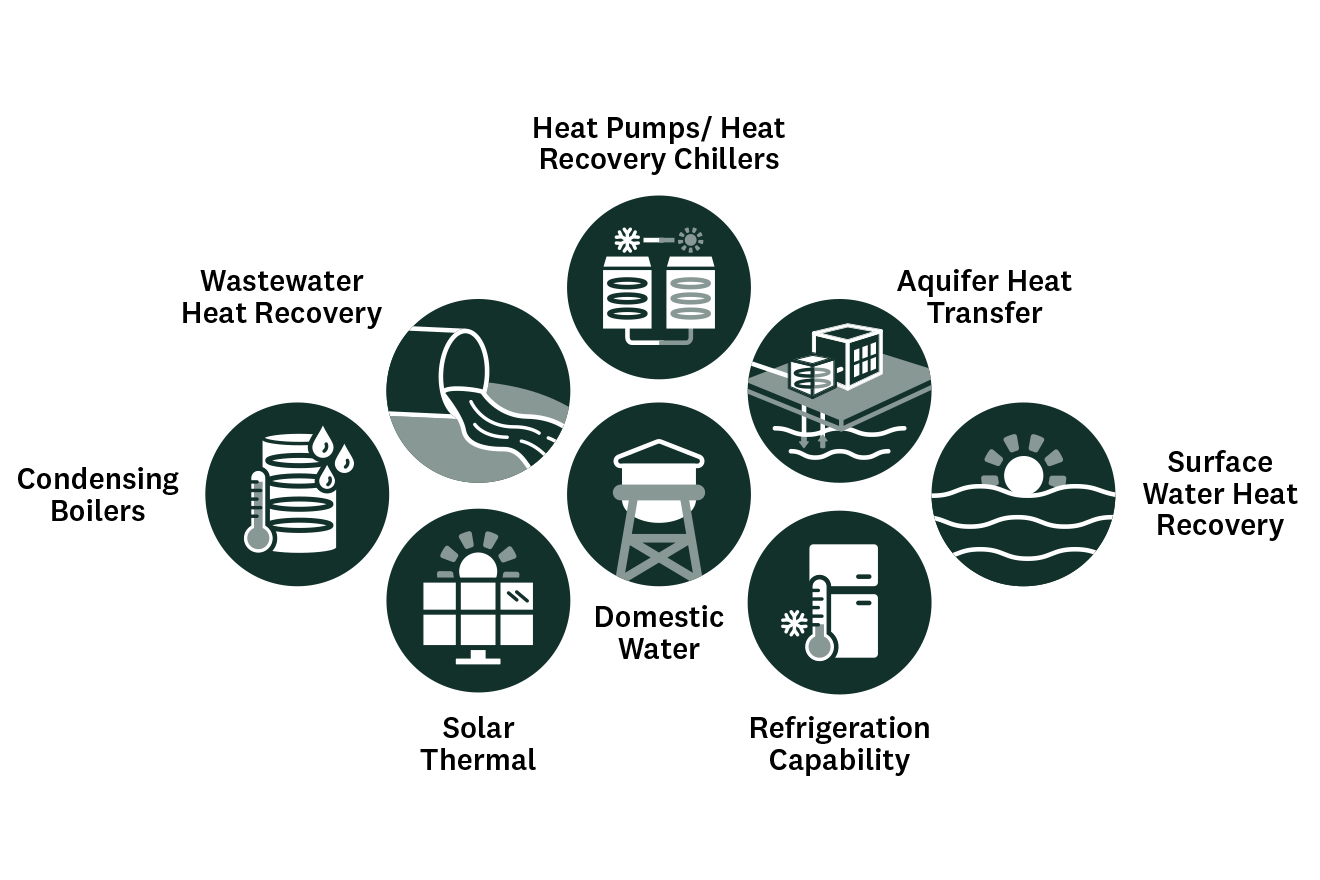
With the transition to hot water, we can enable these heat recovery technologies.
An alternative to pumping steam through our campus circulatory system is hot water. 140°F water loses much less heat upon transfer. It also lets us take advantage of a concept called heat recovery.
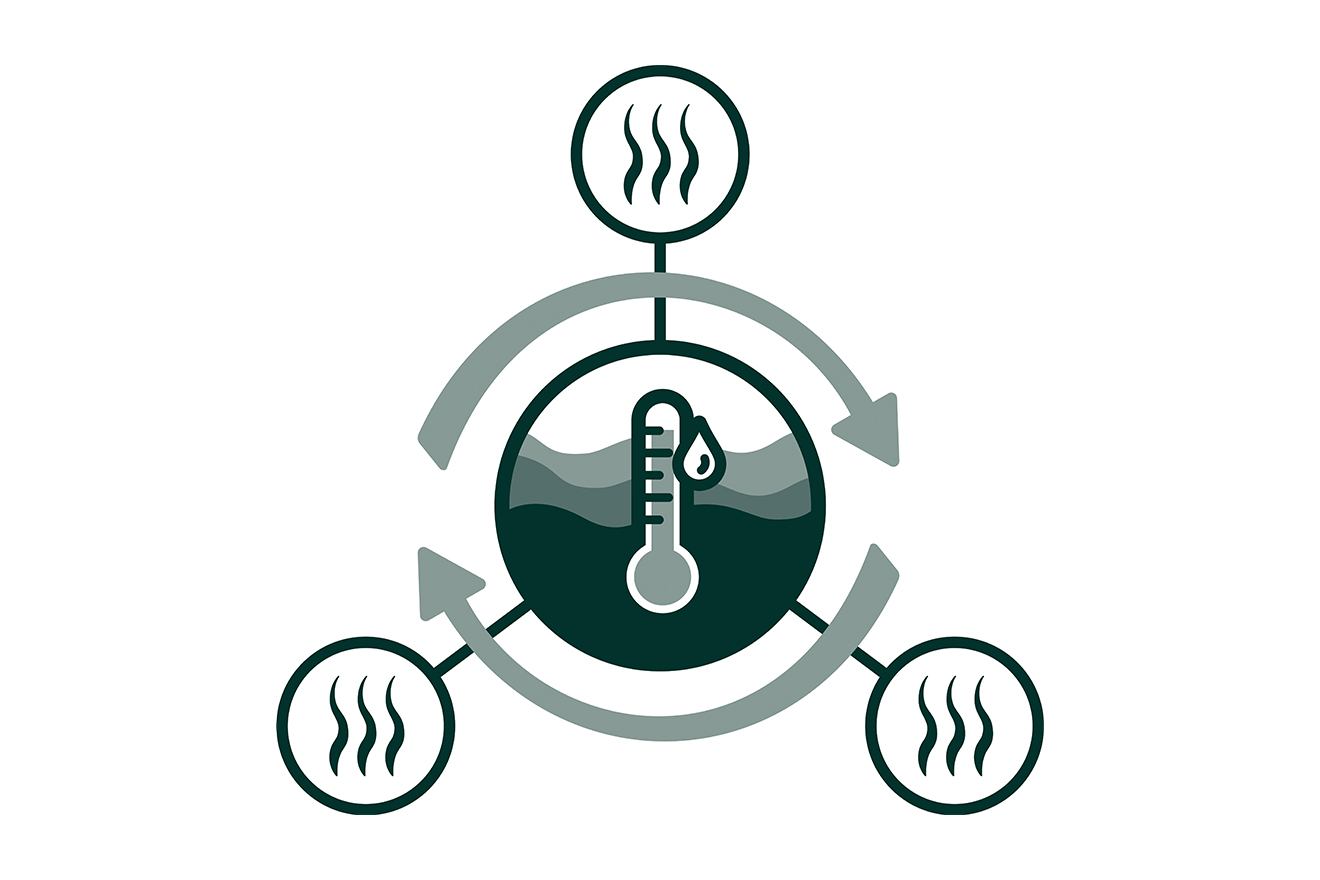
What is Heat Recovery?
Heat recovery is the process of capturing heat that is currently wasted and adding it back into the central heating system. Wasted heat could include the heat that is generated by refrigeration, air conditioning, computer servers or exhaust from generators. A piece of equipment called a heat pump recovers heat from these diverse sources and adds it back into the central heating system. Heat pulled from the geo-exchange borefields is also added to the system and, together, heat recovery and geo-exchange help meet the baseload heating demand of the campus.
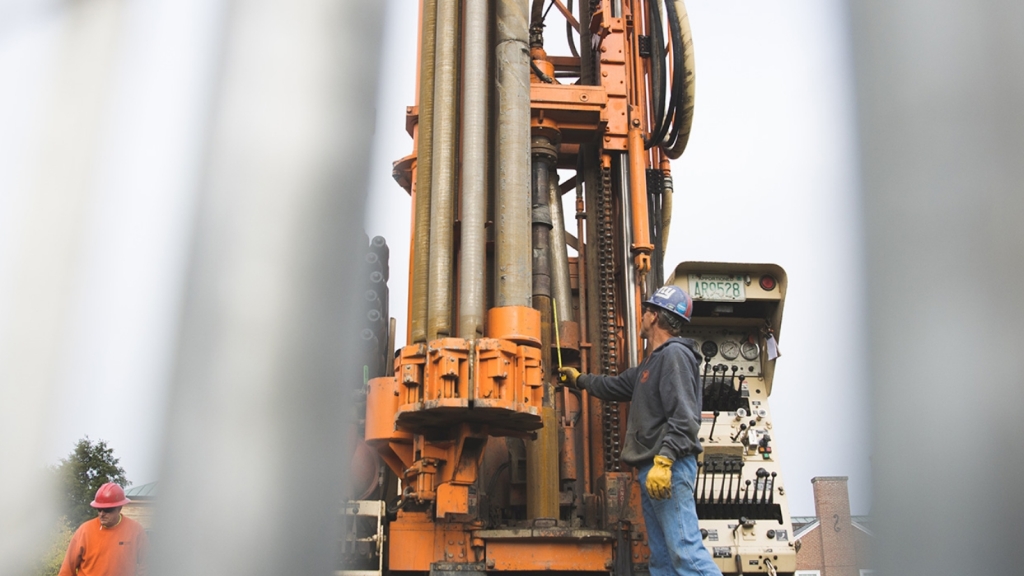
More Resilient Future in Progress
Switching to hot water will ensure our long-term resiliency, but it isn’t easy. That network of distribution piping throughout our campus is used to carry steam and will need to be replaced to instead move hot water, which requires different types of piping. That means you can expect to see some new holes across campus — all of those steam pipes are buried in a network underground. Additionally, we need to update our buildings to accept this new form of heating.

Steam to Hot Water Transition Construction Plan
Construction is underway for our steam to hot water transition. Steam distribution piping will be replaced with new, highly efficient hot water piping.
More about how it works

Strategy
Dartmouth’s energy strategy centers around four main principles: Reduce energy demand, steam to hot water transition, carbon-free heat sources, and zero-carbon electricity.
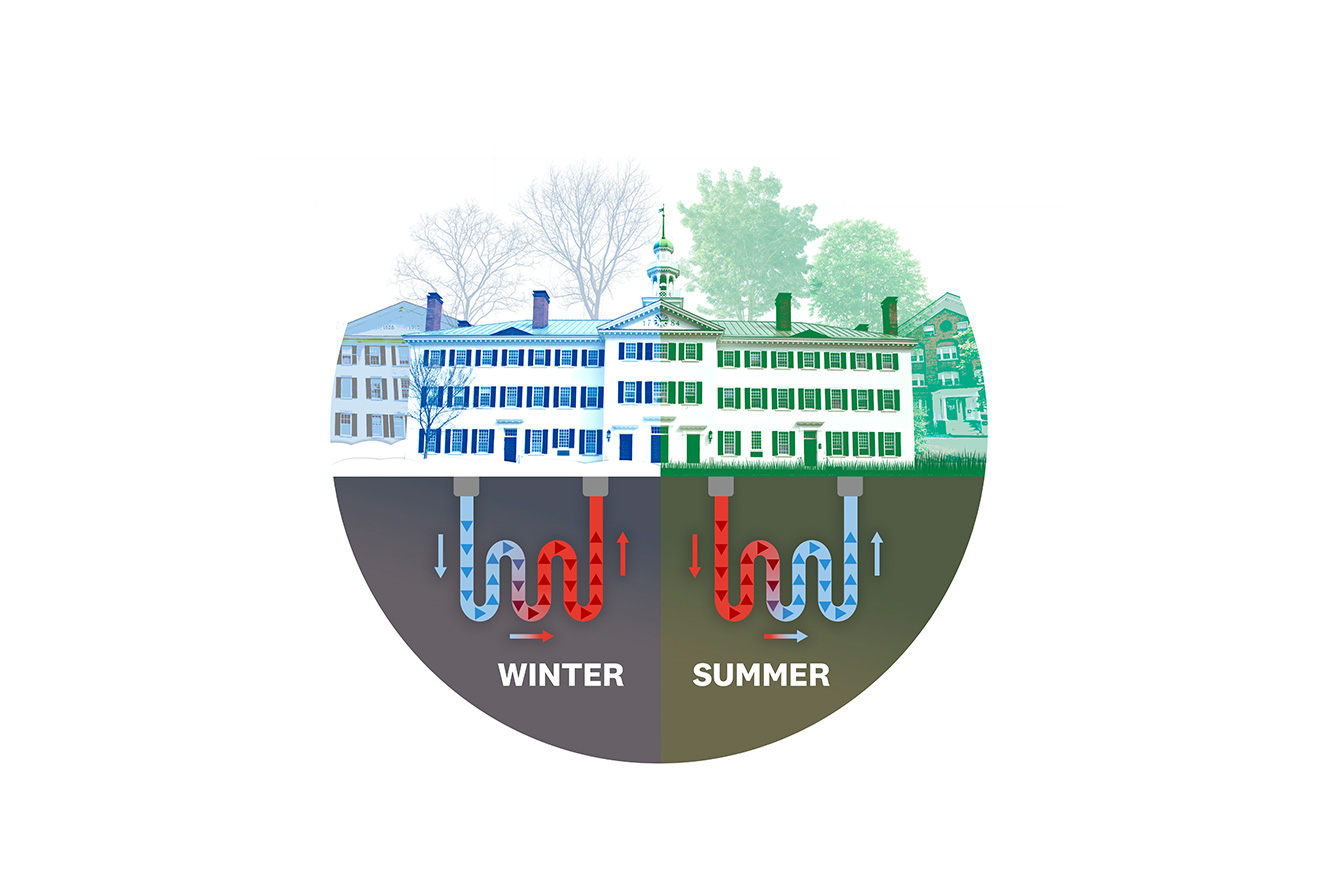
Geo-exchange
Geo-exchange is a highly efficient technology that is part of an updated system that helps heat and cool campus buildings.
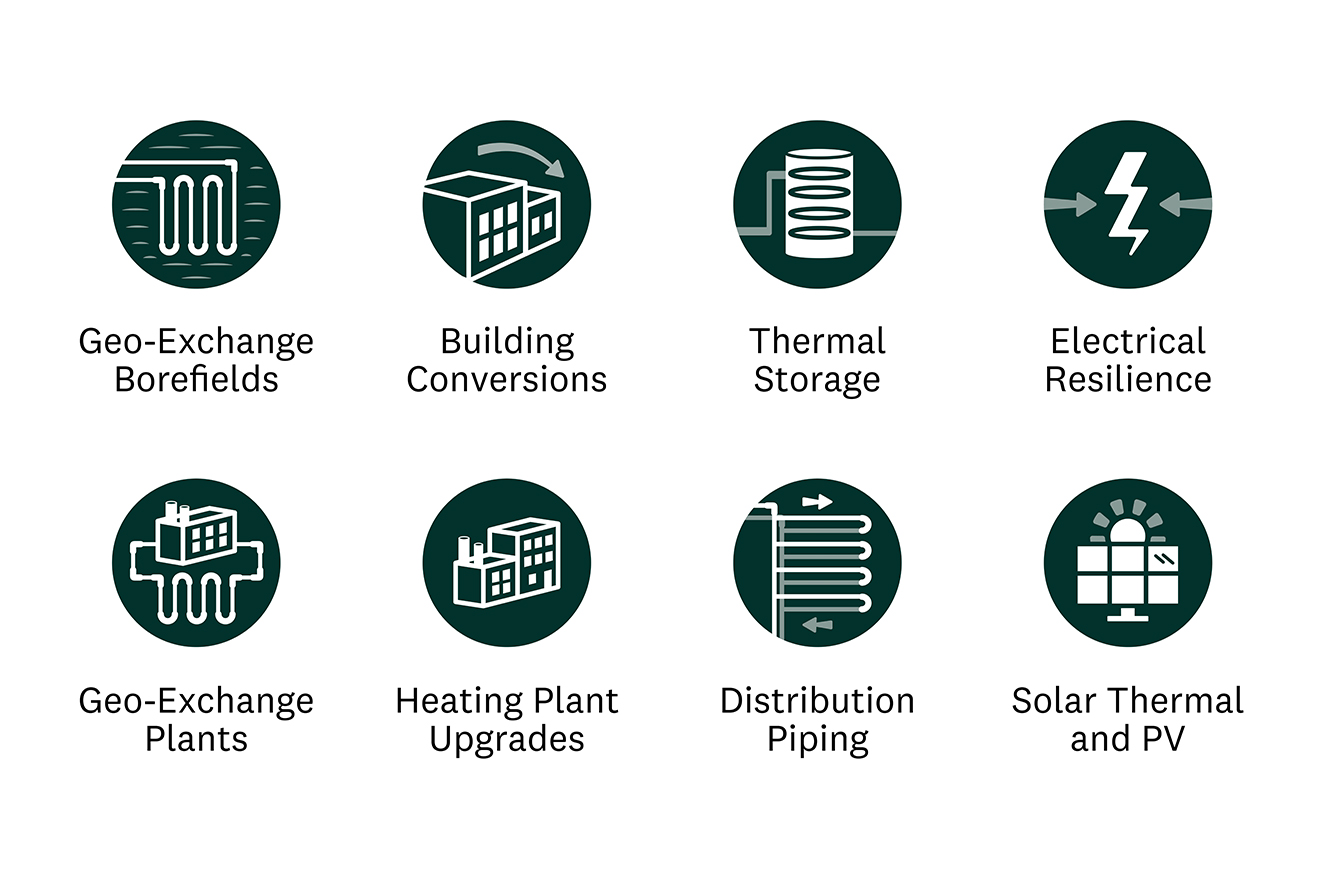
Technologies
These decarbonization components will work together to efficiently meet energy needs, provide necessary backups, and ensure our buildings and systems run efficiently.